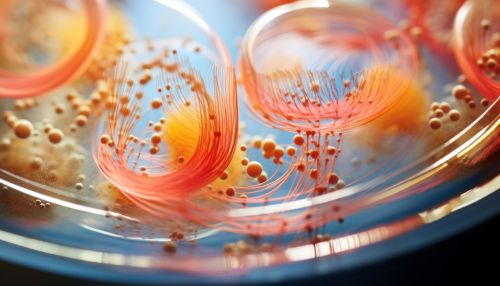The Role of Microbial Consortia in Wastewater Treatment
Introduction
Microbial consortia are complex, multi-species systems that play a crucial role in the biological treatment of wastewater. These consortia consist of diverse microbial communities that work synergistically to degrade organic pollutants, thereby purifying the wastewater. This article delves into the role of microbial consortia in wastewater treatment, exploring their composition, function, and significance in the process.


Microbial Consortia: An Overview
Microbial consortia are defined as an assemblage of microbial species that coexist and interact in a specific environment. These consortia are characterized by their functional diversity, which allows them to adapt to various environmental conditions and perform complex tasks that would be impossible for a single species. In the context of wastewater treatment, microbial consortia are responsible for the breakdown of organic matter and the removal of pollutants.
Composition of Microbial Consortia in Wastewater Treatment
The microbial consortia involved in wastewater treatment are typically composed of bacteria, fungi, and algae. These microorganisms are classified into different functional groups based on their role in the treatment process. For instance, nitrifying bacteria convert ammonia to nitrate, while denitrifying bacteria reduce nitrate to nitrogen gas. Similarly, phosphorus-accumulating organisms help in phosphorus removal, and methanogens are involved in the generation of methane gas.
Role of Microbial Consortia in Wastewater Treatment
The primary role of microbial consortia in wastewater treatment is the degradation of organic pollutants. This is achieved through a series of biological processes, including hydrolysis, acidogenesis, acetogenesis, and methanogenesis. These processes collectively transform complex organic compounds into simpler substances that can be easily removed from the wastewater.
Hydrolysis
Hydrolysis is the first step in the degradation of organic matter. During this process, extracellular enzymes produced by the microbial consortia break down large, insoluble organic molecules into smaller, soluble compounds. This step is essential as it makes the organic matter accessible to other microorganisms in the consortium.
Acidogenesis and Acetogenesis
Following hydrolysis, the soluble compounds are further broken down during the processes of acidogenesis and acetogenesis. In acidogenesis, the microbial consortia convert the soluble compounds into volatile fatty acids, carbon dioxide, hydrogen, and alcohol. Subsequently, in acetogenesis, these products are further transformed into acetic acid, carbon dioxide, and hydrogen.
Methanogenesis
Methanogenesis is the final step in the degradation of organic matter. During this process, methanogenic archaea in the microbial consortia convert the products of acetogenesis into methane and carbon dioxide. This step is crucial as it leads to the production of biogas, a renewable source of energy.
Significance of Microbial Consortia in Wastewater Treatment
The use of microbial consortia in wastewater treatment offers several advantages. Firstly, these consortia are capable of degrading a wide range of organic pollutants, including those that are resistant to conventional treatment methods. Secondly, the process is environmentally friendly as it does not involve the use of harmful chemicals. Lastly, the biogas produced during the process can be harnessed for energy generation, thereby contributing to sustainability.
Challenges and Future Perspectives
Despite their advantages, the use of microbial consortia in wastewater treatment also presents certain challenges. These include the difficulty in maintaining the stability of the consortia, the slow rate of organic matter degradation, and the potential for the release of greenhouse gases. Future research in this field should focus on addressing these challenges and optimizing the use of microbial consortia for wastewater treatment.
